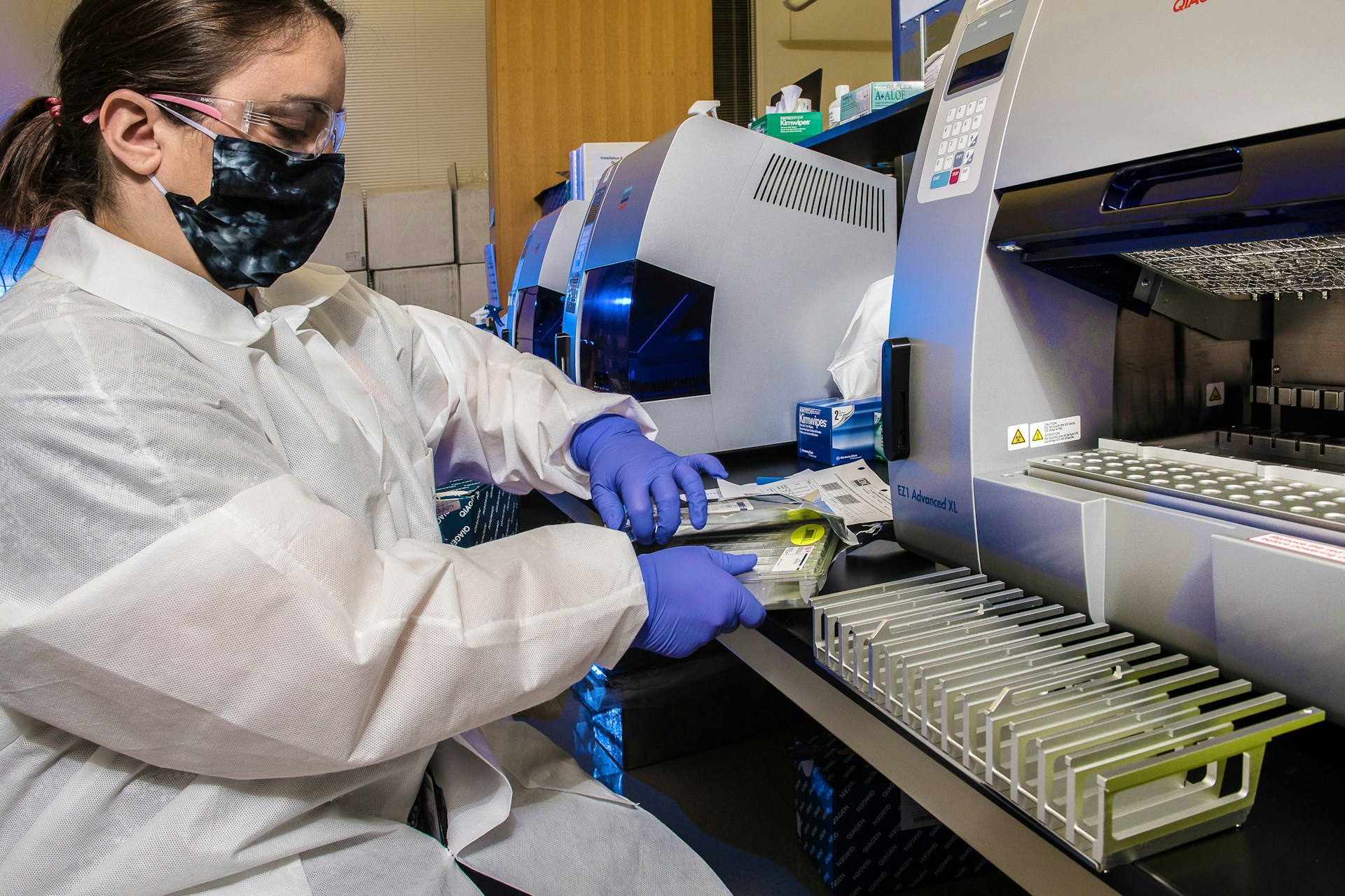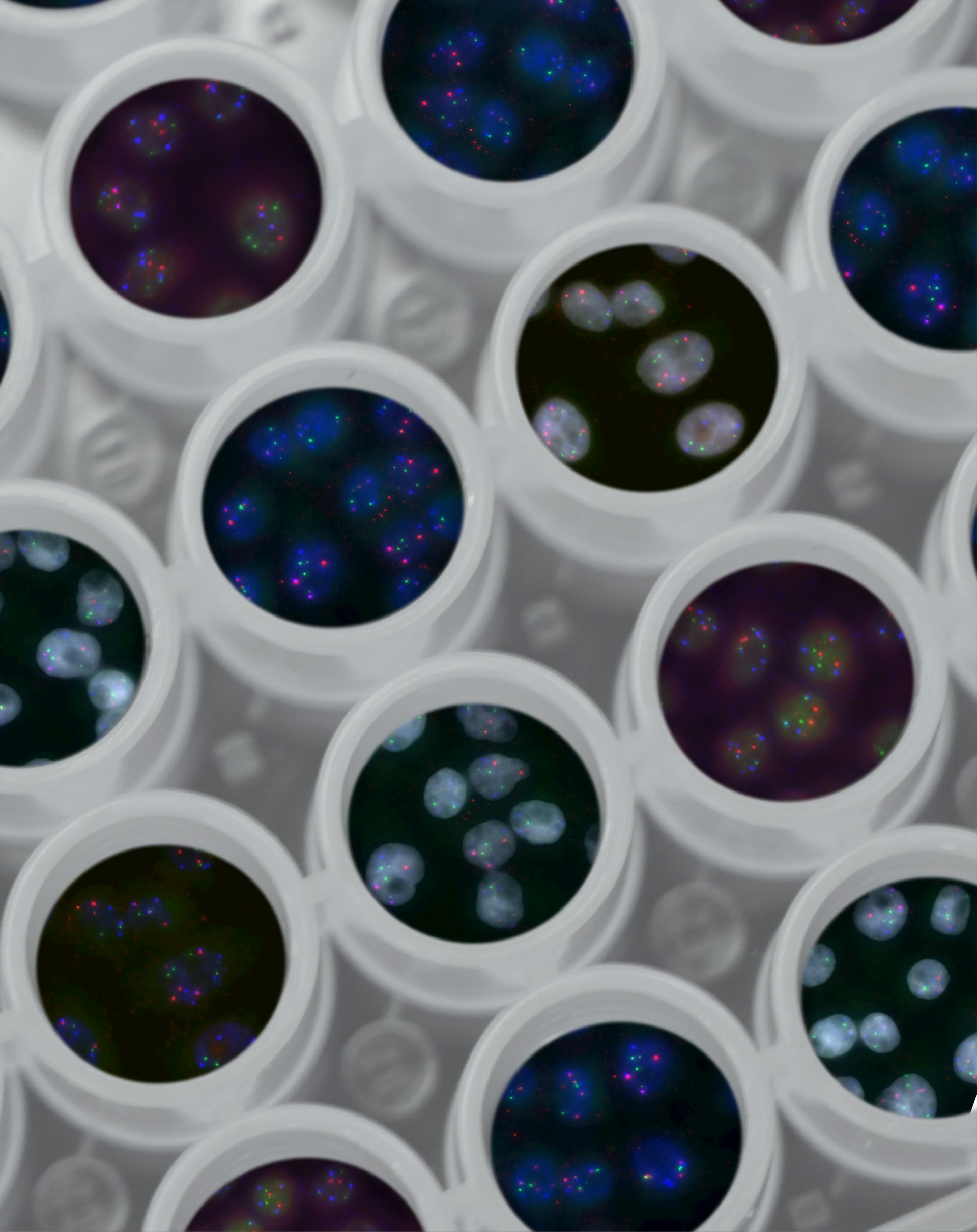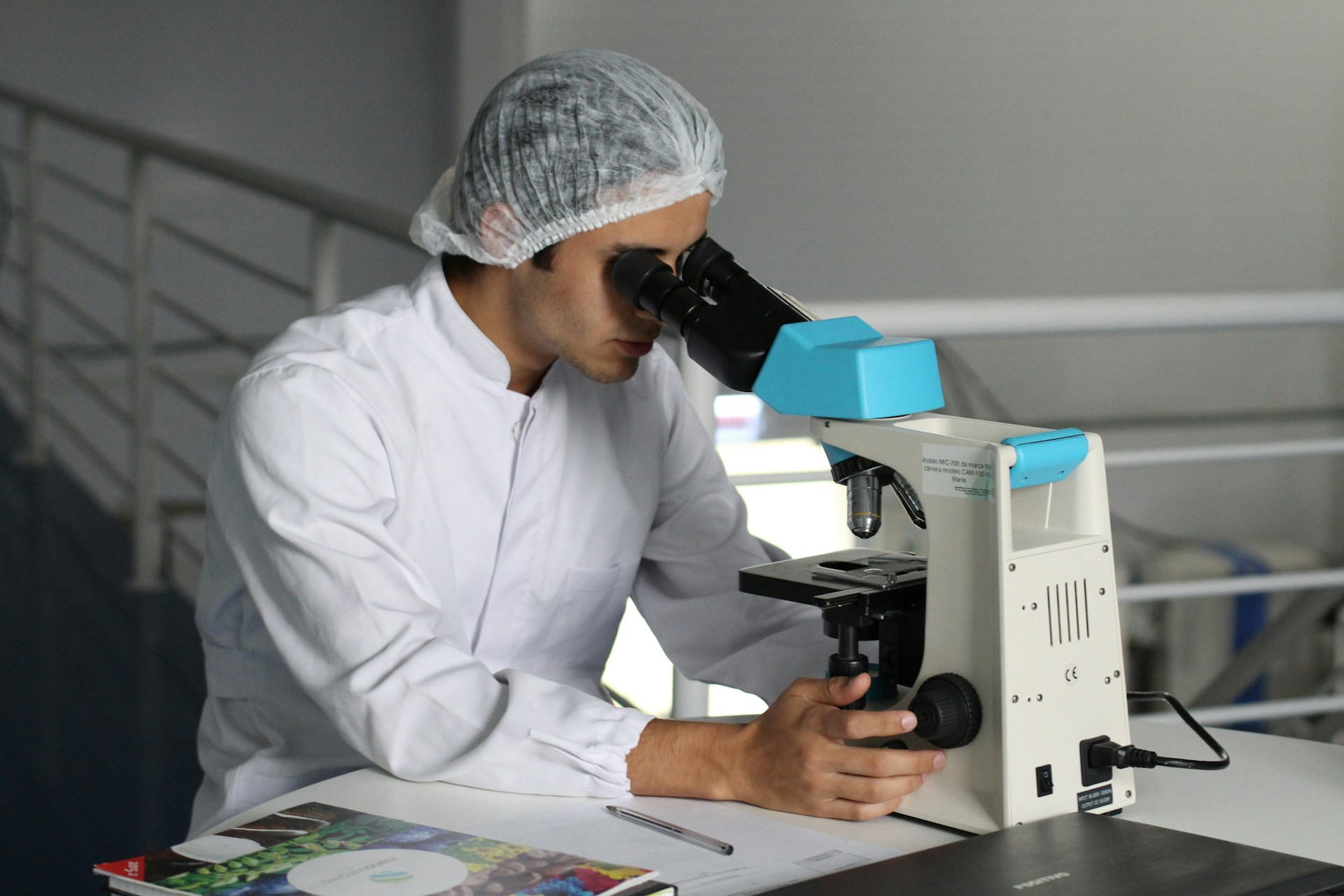Is a Biostatistician Career Right For You?
20 Nov, 20237 minutesAs healthcare and scientific research continue to evolve, the need for exceptional talent to...
As healthcare and scientific research continue to evolve, the need for exceptional talent to analyse and interpret vast amounts of data will grow. Data has always been a key aspect of clinical research, but with trends such as the rapid advancement of cutting-edge technology and the growing demand for life-saving treatments, organisations are becoming increasingly reliant on Biostatisticians to manage critical data.
If you're an aspiring Life Sciences professional with a passion for statistics and biology, Biostatistics could be your perfect career choice. But before you make your final decision, it is vital to get a firm understanding of what it takes to thrive in the dynamic world of biostatistics.
In this guide, we'll explore why Biostatisticians are pivotal for the Life Sciences industry, the skills you need to succeed in the profession, and the steps you need to take to become a fully-fledged Biostatistician.
Why Biostatisticians Are Important
Biostatisticians play a vital role in the Life Sciences industry, not least due to their expertise in statistical analysis and deriving key insights from complex datasets. Combining a deep understanding of scientific concepts with data analysis skills, Biostatisticians are instrumental in making groundbreaking discoveries that impact the health and well-being of people all over the world.
For Life Sciences companies, Biostatisticians are responsible for a number of crucial duties, from designing all-important clinical research studies to interpreting findings for advancing research and developing new, potentially life-saving therapies. Given the significance of their role, it is unsurprising that the demand for professionals with Biostatistics expertise has risen dramatically in recent years.
Analysis shows that there has been an average growth rate of 8% in the number of Biostatistician jobs since 2004, with 18,650 new Biostatistics-related roles expected to be filled by 2029. These findings reveal that the rising demand for Biostatisticians is showing no signs of slowing down. Here are some of the most significant reasons behind this trend:
- Rapid Advancements in Data Collection Technology: The development of cutting-edge technologies in genomics, wearable devices, and electronic health records is generating vast amounts of datasets. With more data being produced than ever before, the need for highly skilled Biostatisticians to collect, analyse, and interpret key findings is intensifying.
- Increased Focus on Evidence-Based Medicine: Healthcare providers have increasingly emphasised evidence-based approaches to making informed decisions about patient care and treatment strategies. Biostatisticians are key for providing much-needed statistical expertise to generate strong evidence from real-world data and clinical research studies.
- Growth in Biomedical Research: Owing to technological advancements, increased government funding, and an ageing population, there has been a significant growth in biomedical research. With an increase in drug development, clinical trials, and genetics research, more Biostatisticians will be required to collect, analyse, and interpret critical data.
- Public Health Challenges: The Covid-19 pandemic came as a wake-up call for governments around the world to pay closer attention to new and emerging public health threats. Epidemiological research generates a large amount of data, so recruiting Biostatisticians with the skills to perform in-depth data analysis is crucial for public health authorities.
Interested in learning more about the developments that are impacting the future of Biostatistics? If so, we urge you to read our ‘Top 5 Trends Shaping Biostatistics Jobs in 2023’ guide.
What Are the Roles and Responsibilities of a Biostatistician?
The significance of Biostatisticians in medical and pharmaceutical research cannot be understated. Combining clinical expertise and a deep understanding of statistical analysis, Biostatisticians are broadly responsible for applying statistical models to analyse data collected from experiments, clinical trials, and even epidemiological studies. So, what do their day-to-day duties look like?
Here are the typical duties that Biostatisticians are expected to perform:
- Collaborate with researchers to determine the design of observational studies and clinical trials
- Establish data collection protocols that ensure data is accurate and complete before analysis
- Develop statistical models designed to identify patterns and assess the effects of pharmaceutical interventions
- Effectively communicate key findings to stakeholders and researchers
- Ensure that all data is collected, analysed, and interpreted in adherence with the latest best practices
In addition to carrying out these core tasks, Biostatisticians may be given additional responsibilities such as providing statistical training to researchers, ensuring regulatory compliance, and offering consulting services for government agencies and Life Sciences companies.
What Skills Do Biostatisticians Need?
To succeed as a Biostatistician, having an appreciation for scientific research, a knack for statistical analysis, and a strong work ethic are key. As with any other Life Science career, Biostatistics offers individuals a chance to make a meaningful difference in the health and well-being of the global population while constantly learning innovative concepts and collaborating with like-minded Life Sciences professionals.
If you have reached this stage of our comprehensive guide, it’s likely that you are intrigued by the prospect of a career in Biostatistics. So far, we have gone into detail about the roles and responsibilities of the role, but what are the specific technical and transferable skills required to thrive in this fascinating profession?
Let’s explore the hard skills Biostatisticians must possess:
- Data Management: Managing, cleaning, and organising vast sets of data is one of the most important skills in a Biostatistician’s arsenal. With effective data management skills, Biostatisticians can effectively perform tasks like handling missing values and resolving data quality issues.
- Statistical Analysis: Applying statistical theory to real-world situations is a must-have quality for Biostatisticians, especially when designing and analysing vital research. Biostatisticians must apply statistical techniques such as probability theory, hypothesis, and regression analysis to accurately interpret clinical trial data.
- Programming Skills: Programming languages like R, Python, and C++ are often used for data automation and manipulation. As such, having programming skills is a desirable quality for Biostaticians. Proficiency in statistical software packages like SAS is also an essential skill for handling complex datasets.
- Knowledge of Clinical Trial Design: Designing clinical trials is no easy feat, particularly when determining sample size, implementing randomisation procedures, and monitoring data. Expertise in clinical trial design is a must for Biostatisticians, as their statistical methods and analysis must be factored into the planning phase.
- Bioinformatics Skills: Biostatisticians working in genomics or proteomics may be required to have outstanding knowledge of tools and techniques used in bioinformatics. Referring to the development and application of computational tools for biological data analysis, bioinformatics involves managing large-scale datasets by leveraging algorithms and computer programming.
Although having these technical attributes is paramount for enjoying a long and fulfilling career in Biostatistics, it is also crucial to display a certain blend of soft skills, such as:
- Excellent communication skills for conveying complex information to stakeholders, healthcare professionals, and policymakers
- Teamwork skills for collaborating with researchers, clinicians, and other professionals
- Exceptional time management skills for overseeing multiple projects at the same time
- An awareness of ethical issues relating to data privacy
- Attention to detail for ensuring accuracy in data handling and analysis
How to Become a Biostatistician
Considering the sheer number of job prospects and the rewarding nature of the role, there is little wonder why individuals would pursue a career in Biostatistics. If you have a strong work ethic, a keen interest in mathematics and science, and a passion for problem-solving, becoming a Biostatistician might just be the right move for you. However, before you rush into applying for the latest Biostatistician jobs, you must have attained the relevant qualifications and work experience most employers seek.
Here are the steps you need to follow to become a Biostatistician:
1. Achieve an Undergraduate Degree
Earning a bachelor’s degree in a relevant field is an important step in your path to becoming a Biostatistician. Many employers require Biostatistician candidates to have master’s degrees, and sometimes even doctorates, so gaining a bachelor’s qualification is essential. This strict academic requirement is due to the fact that Biostatisticians carry a lot of responsibility, tasked with producing data-driven insights that can have an impact on large swathes of the public.
Aspiring Biostatisticians can choose a range of suitable subjects, including mathematics, biology, and statistics. Many of these relevant courses may feature modules on topics that are specifically related to the field of Biostatistics, such as data processes, epidemiology, and statistical computing.
2. Gain Valuable Work Experience
Showcasing relevant work experience on your CV is a sure-fire way to pique the interest of your potential employers. There are various ways to gain experience in Biostatistics, and choosing an option depends on your circumstances. You could seek volunteer opportunities during your summer break if you are in full-time education. Clinical trials and healthcare organisations are usually on the lookout for volunteers to help with statistical analysis.
Another method of gaining work experience is participating in research projects, whether it be at your university or in collaboration with another organisation. By participating in various projects, you’ll soon get to grips with the numerous types of research methodologies, all while enriching your study design and statistical analysis skills.
3. Consider Obtaining a Master’s Degree
As we alluded to earlier, it is common for employers to require applicants to possess an advanced qualification. A master’s degree will not only provide you with the opportunity to enhance your specialist knowledge in statistical models but also set you apart from other candidates who only hold bachelor’s degrees. Research shows that 58% of Biostatisticians possess a master’s qualification, an eye-catching figure that underlines the importance of obtaining a higher degree.
One of the most recognised Biostatistics-related master’s qualifications is the Master of Science in Biostatistics. This degree prepares students for Biostatistics jobs in areas like clinical trials, epidemiology, and genomics by bolstering their expertise in data analysis techniques and statistical applications. Other master’s courses to consider include Master of Public Health or Master of Science in Applied Sciences if you are looking for a broader qualification.
4. Network and Apply in the Right Places
Once you gain sufficient hands-on work experience and all of the necessary qualifications, you’ll be in a position to apply for Biostatistician roles. Networking is a fundamental part of successful job hunting, particularly in the highly competitive world of Biostatistics. You can begin your networking efforts by leveraging online platforms like LinkedIn or ResearchGate, or if you’d prefer to make connections face-to-face, you can attend industry events and career fairs.
Establishing a strong online presence is necessary for attracting the attention of employers, so be sure to optimise your LinkedIn profile by showcasing your work experience and academic achievements. As well as networking, you should also take time to refine your CV and cover letter to highlight your skills and flaunt your passion. You’ll be able to find Biostatistician jobs via Indeed and Glassdoor, but if you’re looking for more specialised job boards, be sure to check out roles that dedicated Life Sciences recruitment agencies offer.
Is Biostatistics the Ideal Life Sciences Career For You?
The number of Biostatistician jobs is set to rise considerably over the coming years, and this growth rate is set to remain for the foreseeable future. With the demand for Biostatisticians far outpacing the supply of available talent, professionals with sought-after Biostatistics skills have very bright career prospects.
For aspiring Biostatisticians, pursuing relevant education, gaining valuable work experience, potentially acquiring a master's degree, and networking strategically are the essential steps towards a fulfilling career in this dynamic field. By leveraging skills, knowledge, and experience, individuals can contribute significantly to advancing research and improving global health outcomes through Biostatistics.
Specialists in Life Sciences Recruitment
Our passion for connecting the best and brightest candidates with Biostatistician jobs and other Life Sciences roles is second to none. We have been providing market-leading recruitment solutions for job-seekers and companies since 2008. Our dedicated Biometrics team recognises the significance of Biostatistics to the Life Sciences sector, going above and beyond to fill key roles with exceptional talent.
Reach out to us today to learn how our consultants can support you in achieving your career goals.











